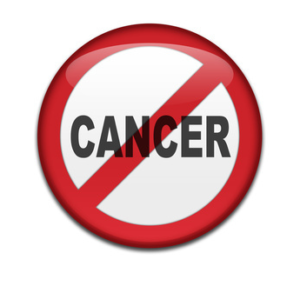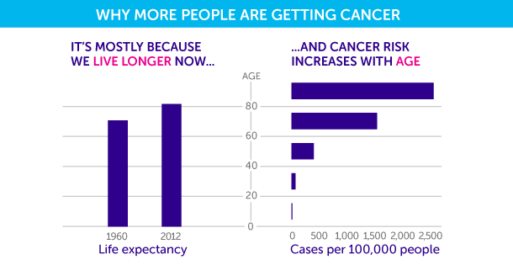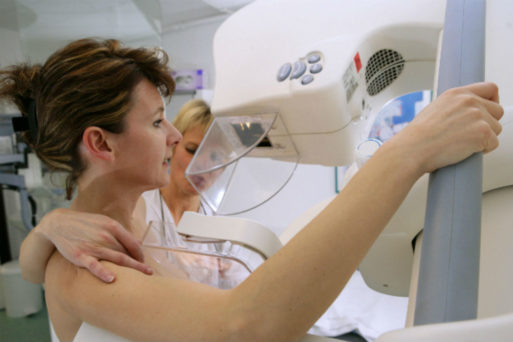
Credit: pacificcancerfitness.org
There’s no doubt in anyone’s mind that the incidence of cancer is increasing worldwide. According to recent statistics from the National Cancer Institute, men and women in the United States have a lifetime risk of developing some form of cancer of 40 percent. In the United Kingdom, that risk is 1 in 2, according to Cancer Research UK.
The sheer number of cancer diagnoses is also staggering. In 2016, an estimated 1,685,210 new cases of cancer will be diagnosed in the United States. That’s 530 new cases for every 100,000 people, compared to 479 new cases per 100,000 in 1996 — an increase of about 10 percent in 20 years.
At the same time, cancer deaths are decreasing dramatically. The number of cancer deaths in the United States has fallen 23 percent since 1991. In the United Kingdom, cancer survival has doubled over the past 40 years.
So why is it that the incidence of cancer is increasing while advances in cancer treatment are preventing so many deaths? According to Cancer Research UK, the answer is simple — longevity. People are living longer, and the genetic errors that lead to most cancers have more time to occur the longer a person lives. While young people can and do get cancer, it is largely a disease of old age.

About 75 percent of cancer diagnoses occur in people over 60
Credit: cancer Research UK
More accurate and reliable methods of detecting early cancers is also a factor in the number of cancers diagnosed. Since the prostate specific antigen was first identified as a marker for prostate cancer decades ago, millions of cancers have been diagnosed that would almost certainly never have been detected if the test had not been done. What’s more, many of those diagnosed with and treated for prostate cancer would have died from other causes before the disease progressed. According to Dr. Richard Albin, the man credited with developing the PSA test, “American men have a 16 percent lifetime chance of receiving a diagnosis of prostate cancer, but only a 3 percent chance of dying from it.” Dr. Albin, who claims the test is “hardly more effective than a coin toss,” believes it is greatly overused.

Widespread breast cancer screening has led to an increase in the number of cancers diagnosed
(Credit: woman2womenblog.com)
Similarly, widespread breast cancer screening has resulted in far more breast cancers being detected than ever before. Undoubtedly this has saved many lives. However, as with prostate cancers, many of the cancers detected have been slow-growing tumors that would have been unlikely to cause harm before the person died from another cause.
While understanding the impact of longevity and better detection on increasing cancer rates is important, experts emphasize that other, preventable factors continue to impact cancer rates. Obesity, for example, which has reached epidemic proportions in much of the Western world, is associated with an increased risk of at least eight cancers, including cancer of the esophagus, colon and rectum, pancreas, kidney, gallbladder and (in post-menopausal women) breast. Further, while the number of people who smoke tobacco has decreased significantly over the past several decades, smoking remains the number one preventable cause of cancer and the number one cause of cancer deaths in the world.

 The Confusing Truth About Increasing Cancer Rates
The Confusing Truth About Increasing Cancer Rates


 Recovering Cremation Remains After the Los Angeles Fires
Recovering Cremation Remains After the Los Angeles Fires
 “As Tears Go By” by Marianne Faithfull
“As Tears Go By” by Marianne Faithfull
 “The Sea” by John Banville
“The Sea” by John Banville














